Abstract
Students with academic deficits learned delayed matching-to-sample tasks that used complex sample stimuli, each consisting of a picture and a printed word. A touch to the sample complex removed it from the computer display and produced either picture comparisons or a choice pool of letters. If the comparisons were pictures, selecting the picture identical to the preceding sample was reinforced. If the letters appeared, letter-by-letter construction of the preceding printed word sample was reinforced. The procedure engendered new constructed-response spelling performances and arbitrary relations among pictures and printed words in matching to sample. The emergence of relations among different sets of printed words (paired with the same pictures) suggested classes of equivalent stimuli. Outcome tests involving spoken words as sample stimuli suggested expansion of subjects' spelling repertoires and stimulus classes.
Full text
PDF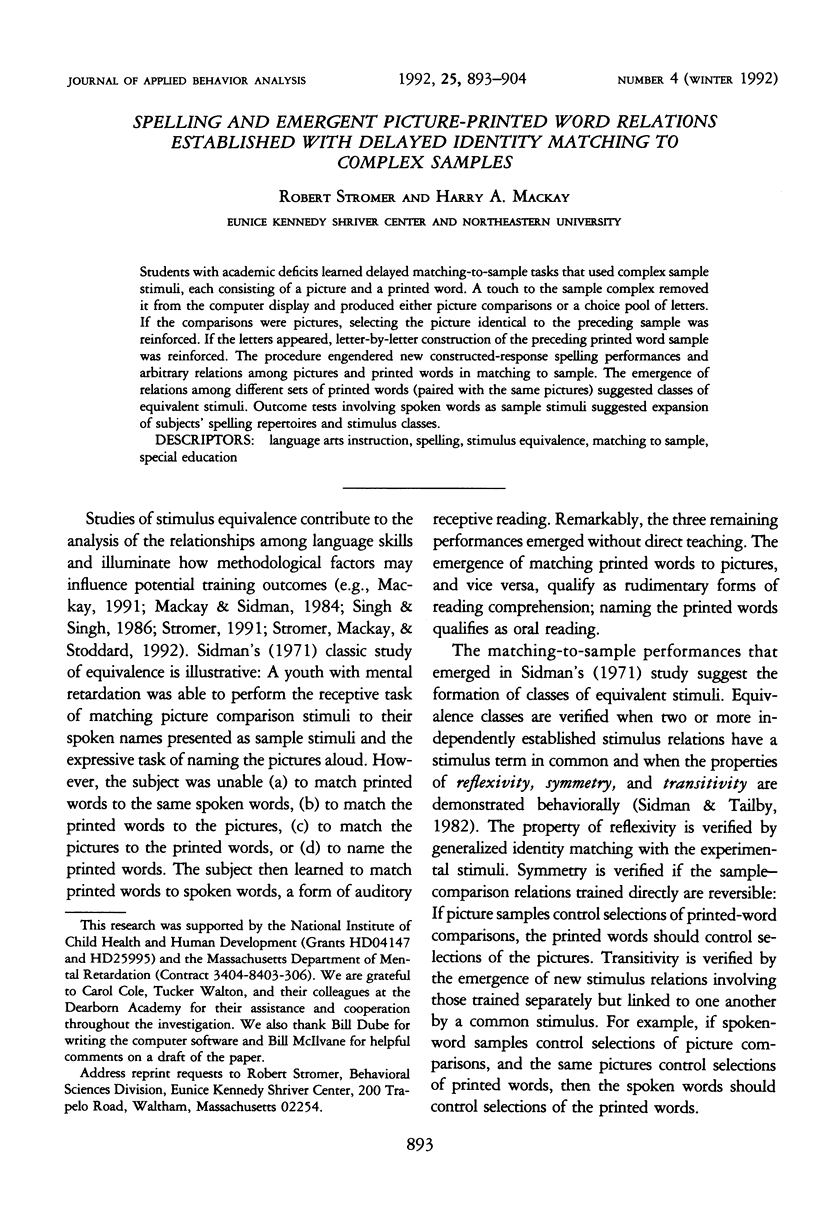
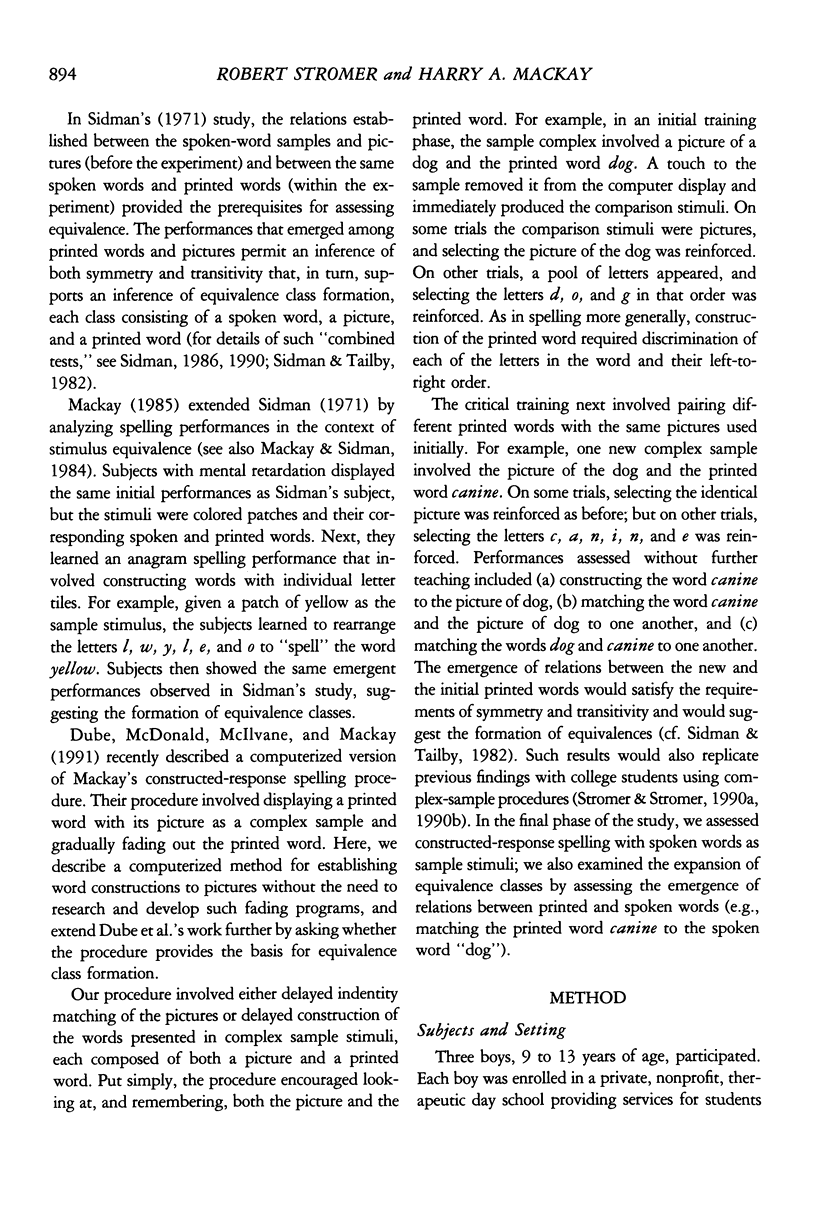
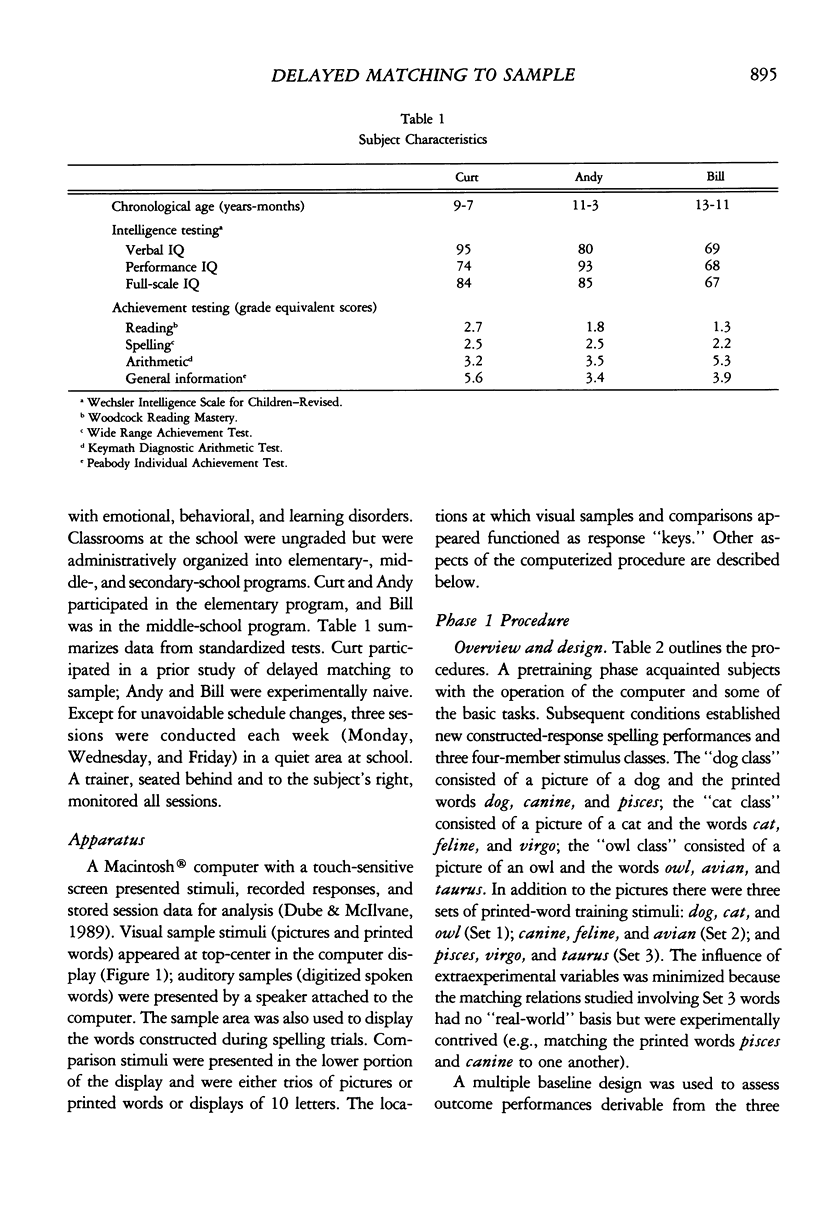
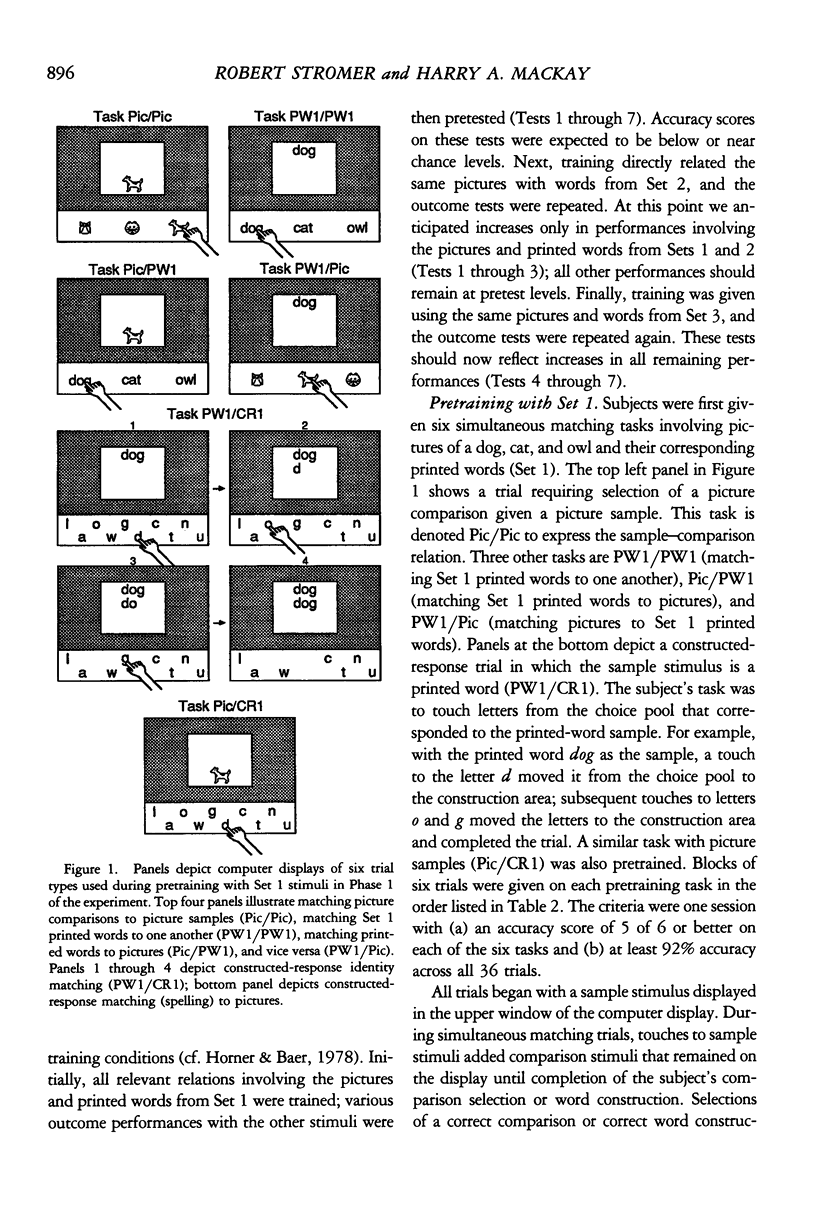
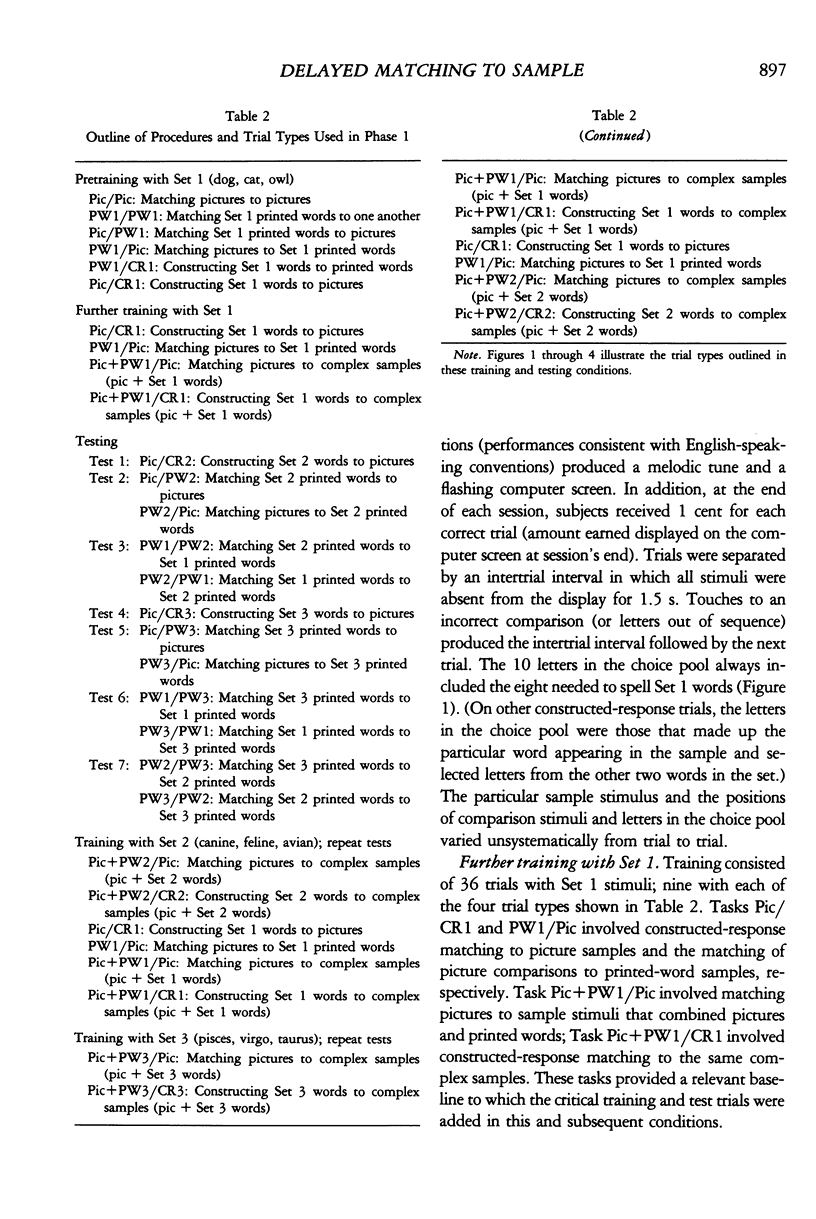
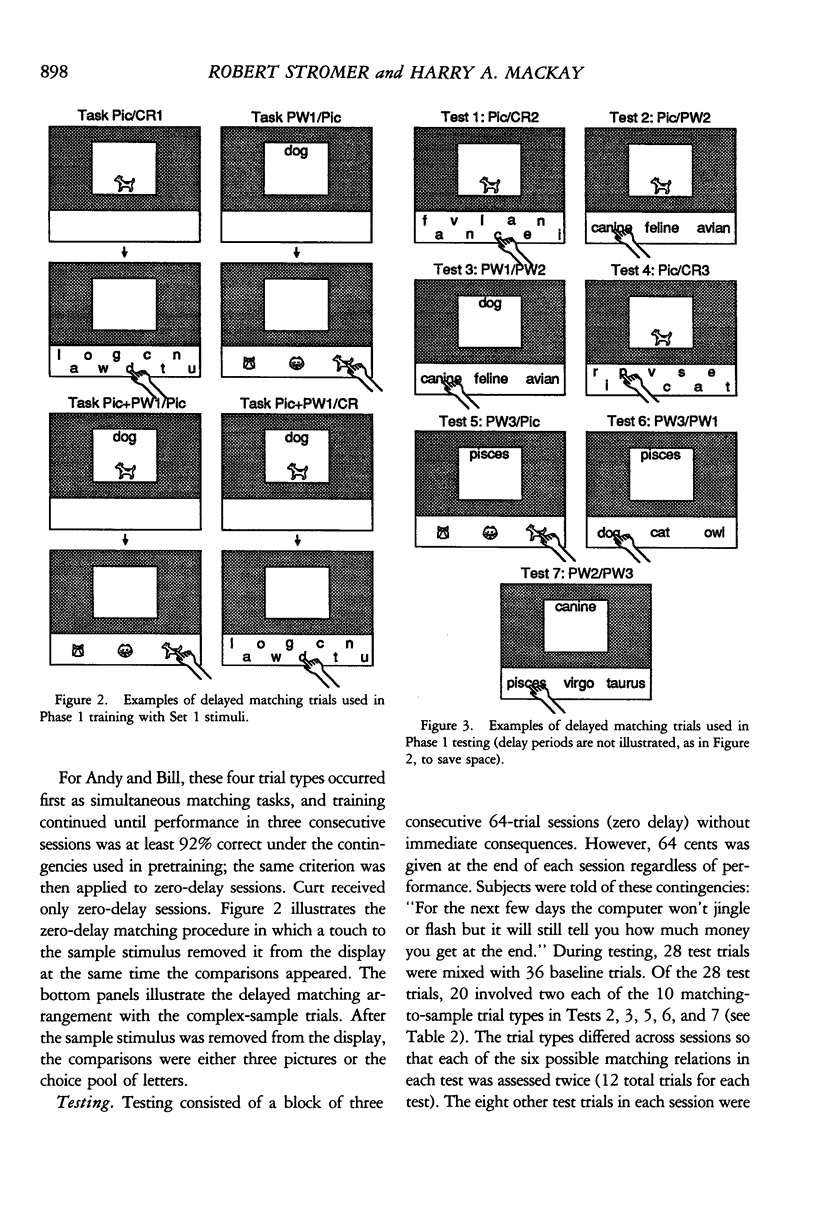



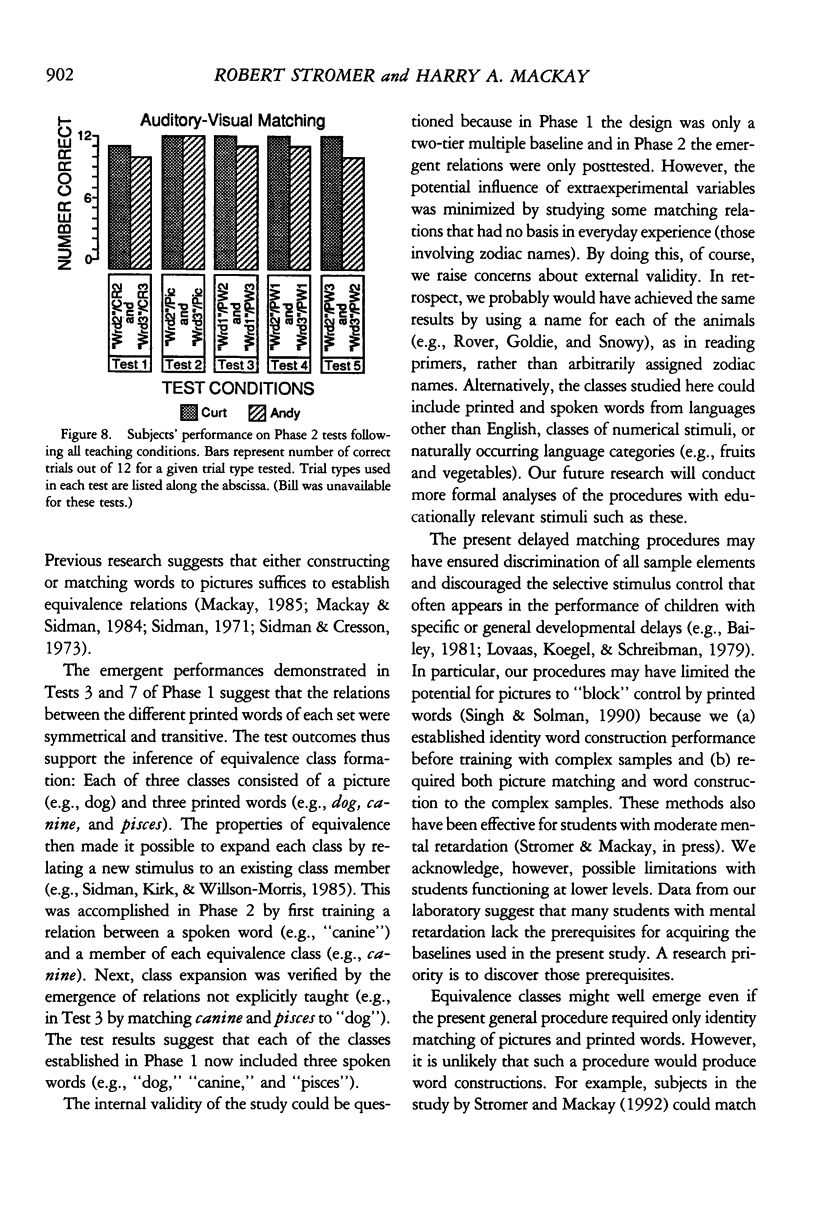


Selected References
These references are in PubMed. This may not be the complete list of references from this article.
- Bailey S. L. Stimulus overselectivity in learning disabled children. J Appl Behav Anal. 1981 Fall;14(3):239–248. doi: 10.1901/jaba.1981.14-239. [DOI] [PMC free article] [PubMed] [Google Scholar]
- Dube W. V., McDonald S. J., McIlvane W. J., Mackay H. A. Constructed-response matching to sample and spelling instruction. J Appl Behav Anal. 1991 Summer;24(2):305–317. doi: 10.1901/jaba.1991.24-305. [DOI] [PMC free article] [PubMed] [Google Scholar]
- Horner R. D., Baer D. M. Multiple-probe technique: a variation on the multiple baseline. J Appl Behav Anal. 1978 Spring;11(1):189–196. doi: 10.1901/jaba.1978.11-189. [DOI] [PMC free article] [PubMed] [Google Scholar]
- Lee V. L., Pegler A. M. Effects on spelling of training children to read. J Exp Anal Behav. 1982 Mar;37(2):311–322. doi: 10.1901/jeab.1982.37-311. [DOI] [PMC free article] [PubMed] [Google Scholar]
- Lovaas O. I., Koegel R. L., Schreibman L. Stimulus overselectivity in autism: a review of research. Psychol Bull. 1979 Nov;86(6):1236–1254. [PubMed] [Google Scholar]
- Sidman M., Cresson O., Jr Reading and crossmodal transfer of stimulus equivalences in severe retardation. Am J Ment Defic. 1973 Mar;77(5):515–523. [PubMed] [Google Scholar]
- Sidman M., Kirk B., Willson-Morris M. Six-member stimulus classes generated by conditional-discrimination procedures. J Exp Anal Behav. 1985 Jan;43(1):21–42. doi: 10.1901/jeab.1985.43-21. [DOI] [PMC free article] [PubMed] [Google Scholar]
- Sidman M. Reading and auditory-visual equivalences. J Speech Hear Res. 1971 Mar;14(1):5–13. doi: 10.1044/jshr.1401.05. [DOI] [PubMed] [Google Scholar]
- Sidman M., Tailby W. Conditional discrimination vs. matching to sample: an expansion of the testing paradigm. J Exp Anal Behav. 1982 Jan;37(1):5–22. doi: 10.1901/jeab.1982.37-5. [DOI] [PMC free article] [PubMed] [Google Scholar]
- Singh N. N., Solman R. T. A stimulus control analysis of the picture-word problem in children who are mentally retarded: the blocking effect. J Appl Behav Anal. 1990 Winter;23(4):525–532. doi: 10.1901/jaba.1990.23-525. [DOI] [PMC free article] [PubMed] [Google Scholar]
- Stevens K. B., Blackhurst A. E., Slaton D. B. Teaching memorized spelling with a microcomputer: time delay and computer-assisted instruction. J Appl Behav Anal. 1991 Spring;24(1):153–160. doi: 10.1901/jaba.1991.24-153. [DOI] [PMC free article] [PubMed] [Google Scholar]


